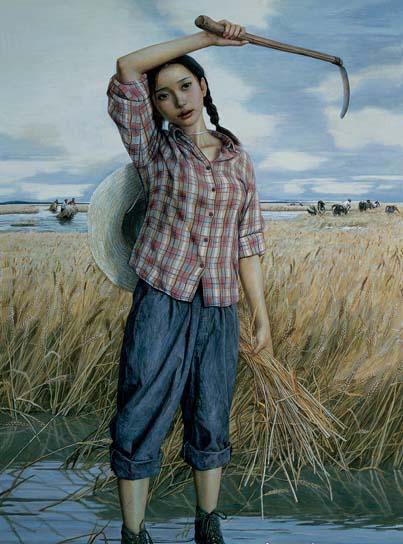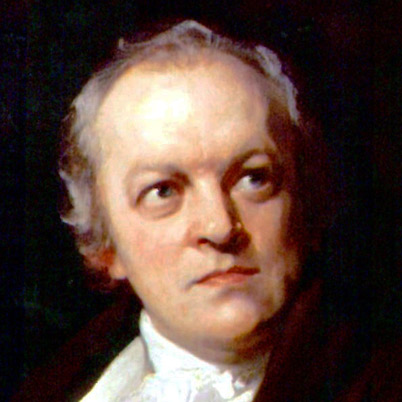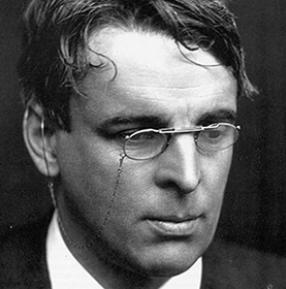Critical Analysis of The Nightingale and the Glow-worm:
In this poem, the poet tells us a story with a moral. However, he envisions a very noble role for the poet. He feels that the poet should be responsible for more than just teaching his readers a lesson. He should also indicate to them where that lesson should be applied. That is exactly what Cowper does in this poem. He tells us about the nightingale and the glow-worm to teach us about mutual respect. In addition to this, he tells us that it is warring factions that should learn this lesson. The nightingale and the glow-worm are thus symbols for the leaders and followers of different political and religious groups. Such groups only serve to divide mankind on the basis of artificially created categories. They teach their adherents to discriminate against those whom we feel are different from us in their persuasion. However, this is not the correct attitude for one to adopt towards his fellow men.
The poet feels that we should be able to respect differences. Every man is unique and he has unique abilities. These abilities and talents should not be seen as a basis for alienating him. Instead, his uniqueness should be valued by his fellow men. All of us human beings should be united n our efforts to make the world a better place. We should all aim for communal harmony because if we all make the same amount of effort, then we will all reap the corresponding benefits equally as well. Life is short, and so we should not waste time over hatred and discrimination. We should love our fellow man and make the most of this life.
Stanza-wise Annotation of The Nightingale and the Glow-worm:
Please note: N= noun, V=verb, Adj=Adjective, Adv=Adverb, P=Preposition
1st stanza:
Nightingale (N): A small migratory thrush with drab brownish plumage, noted for its rich melodious song which can often be heard at night
Cheered (V): Past tense of the word “cheer”, that is, to give comfort or support to
Eve (N): Evening
Note (N): A bird’s song or call, or a single tone in this
Suspended (V): Past tense of the word “suspend”, that is, to temporarily prevent from continuing or being in force or effect
Eventide (N): The end of the day; evening
Keen (Adj): Having or showing eagerness or enthusiasm
Demands (N): Plural form of the word “demand”, that is, an insistent and peremptory request, made as of right
Appetite (N): A natural desire to satisfy a bodily need, especially for food
Eagerly (Adj): Having or showing keen interest, intense desire, or impatient expectancy
Spied (V): Past tense of the word “spy”, that is, to discern or make out, especially by careful observation
Glow-worm (N): A soft-bodied beetle with luminescent organs in the abdomen, especially the larva-like wingless female which emits light to attract the flying male
Spark (N): A small flash of light
Stooping (V): Present participle form of the word “stoop”, that is, to bend one’s head or body forwards and downwards
Hawthorn (N): A thorny shrub or tree of the rose family, with white, pink, or red blossom and small dark red fruits (haws). Native to north temperate regions, it is commonly used for hedging in Britain
Crop (N): A pouch in a bird’s gullet where food is stored or prepared for digestion
Intent (N): Intention or purpose
Harangued (N): Past tense of the word “harangue”, that is, to lecture (someone) at length in an aggressive and critical manner
Eloquent (Adj): Clearly expressing or indicating something
2nd stanza:
Quoth (V): An older form of the word “said”
Minstrelsy (N): The activity of performing as a minstrel or the occupation of a minstrel, that is, a medieval singer or musician, especially one who sang or recited lyric or heroic poetry to a musical accompaniment for the nobility
Abhor (V): Regard with disgust and hatred
’Twas: Short form of the phrase “it was”
Beautify (V): Improve the appearance of
Songster (N): A songbird
Oration (N): A formal speech, especially one given on a ceremonial occasion
Warbling (V): Present participle form of the word “warble”, that is, (of a bird) to sing softly and with a succession of constantly changing notes
Approbation (N): Approval or praise
Released (V): Past tense of the word “release”, that is, to allow or enable to escape from confinement; set free
Supper (N): An evening meal, typically a light or informal one
3rd stanza:
Jarring (Adj): Clashing
Sectaries (N): Plural form of the word “sectary”, that is, a member of a religious or political sect
Discern (V): Recognize or find out
Devour (V): Eat (food or prey) hungrily or quickly
Consent (N): Permission for something to happen or agreement to do something
Transient (Adj): Lasting only for a short time; impermanent
Grace (N): (In Christian belief) the free and unmerited favor of God, as manifested in the salvation of sinners and the bestowal of blessings
4th stanza:
Studiously (Adv): Diligently
Prize (N): Something of great value that is worth struggling to achieve
Poetic Devices in The Nightingale and the Glow-worm:
Rhyme scheme:
This poem is made up of 19 rhymed couplets. Hence, the rhyme scheme of this poem is as follows – AABBCC and so on.
Rhetorical devices:
Personification:
This rhetorical device is used to bestow human qualities on something that is not human. In this poem, the poet uses the device of personification with respect to the glow-worm, giving it the human ability to speak.
Metaphor:
This rhetorical device is used when a covert comparison is made between two different things or ideas. In this poem, the poet uses the device of metaphor in the 2nd line of the 2nd stanza when the glow-worm compares the nightingale to a minstrel or troubadour. He again uses this device in the 3rd line of the 3rd stanza when he compares human beings having different religious beliefs with brothers. He uses it for the last time in the 6th line of the 3rd stanza when he compares life with sleep.
Central Idea of The Nightingale and the Glow-worm:
A Nightingale spots a glow-worm and plans to eat it. The glow-worm gives a speech in a bid to save himself. He tells the nightingale that the same God has created them both and given them their unique abilities. Therefore they should respect each other’s uniqueness and never harm each other. The poet feels that this lesson ought to be learned by warring factions so that man does not fight with his fellow beings and the world becomes a peaceful place.
Themes of The Nightingale and the Glow-worm:
Respecting differences:
The nightingale preys upon the glow-worm because it is his nature to do so. He believes that since the glow-worm is different from him, he can eat the glow-worm. However, the glow-worm shows him that the difference between them should be the basis of mutual respect, not mutual enmity or mutual conflict. In the same way, warring factions should respect each other’s system of belief. If they respect their differences, then there will be no other reason for them to fight and they can live together in peace and harmony.
Recognizing the unity of man:
The glow-worm teaches the nightingale that all creatures of the earth were created by the same God. In the same way, all men are also the children of the same God. Therefore they are like brothers to each other. That is why the poet asks his readers not to hate their fellow men or to wage war against them. In the end, all men are essentially the same, and so they should stand up for each other.
The Tone of The Nightingale and the Glow-worm:
The tone of this poem is slightly didactic, but certainly not preachy. The poet does not believe that he should be indoctrinating his readers in the way that the leaders of political or religious groups do. That is why he conveys his message through the medium of a childish story and only then tells us where that lesson should be applied.
Conclusion:
The title of “The Nightingale and the Glow-worm” is slightly misleading. It can be argued that the title is apt because it tells us of the two main characters in the story. However, the poet’s ultimate message does not concern these imaginary characters. It concerns man in the flesh. The fact that he is able to send this message across without any direct preaching is what makes Cowper such a skilled poet.
Some online learning platforms provide certifications, while others are designed to simply grow your skills in your personal and professional life. Including Masterclass and Coursera, here are our recommendations for the best online learning platforms you can sign up for today.
The 7 Best Online Learning Platforms of 2022
- Best Overall: Coursera
- Best for Niche Topics: Udemy
- Best for Creative Fields: Skillshare
- Best for Celebrity Lessons: MasterClass
- Best for STEM: EdX
- Best for Career Building: Udacity
- Best for Data Learning: Pluralsight













